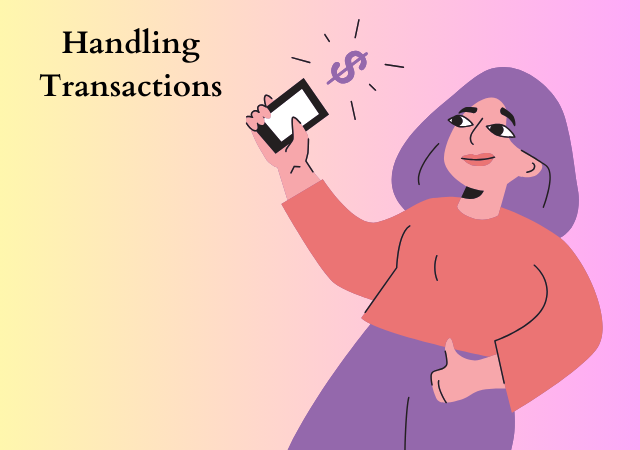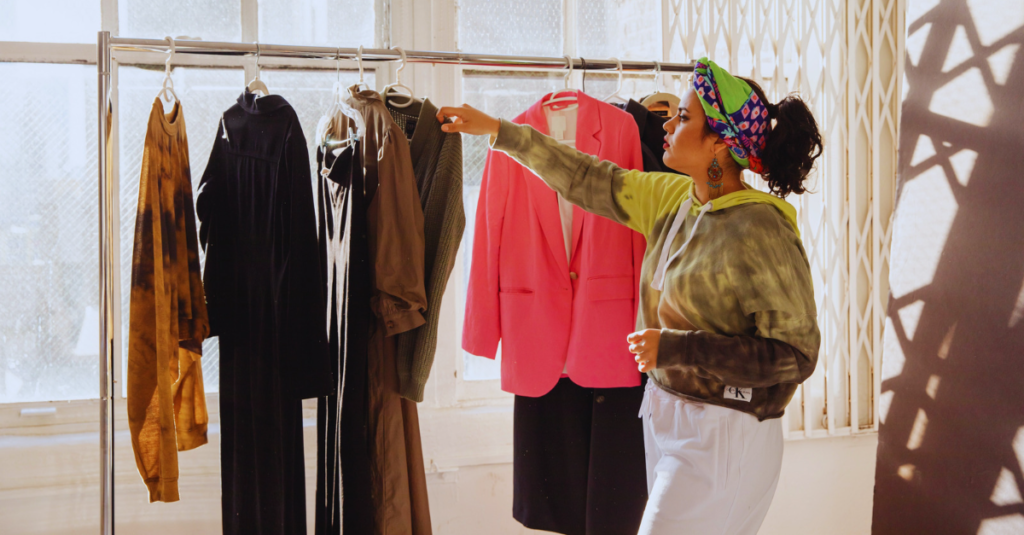The Ultimate Guide to Selling Your Used Clothes Online for Profit
Introduction
Welcome to “The Ultimate Guide to Selling Your Used Clothes Online for Profit.” In a world increasingly driven by sustainability and smart consumer choices, the market for pre-loved fashion has never been more vibrant. Whether you’re decluttering your closet or looking to turn your passion for fashion into a lucrative side hustle, this comprehensive guide is your roadmap to success. We’ll walk you through the entire process – from assessing your wardrobe and choosing the right online platform to creating compelling listings and building a thriving online presence. Discover tips on optimizing your listings, handling transactions securely, and even scaling your online clothing business.
With insights into legal considerations and ethical practices, this guide empowers you to not only profit from your used clothes but also navigate the online marketplace with confidence. Unlock the potential of your wardrobe and join the ranks of successful online clothing entrepreneurs with our ultimate selling guide.
I. Assessing Your Wardrobe

The first step in the journey to selling your used clothes online begins with a critical assessment of your wardrobe. Take the time to sort and categorize your items, identifying pieces that are in demand. Trends change, and what may no longer spark joy for you might be the treasure someone else is searching for. Consider the seasonality of your clothes, prioritizing items suitable for the current market trends.
Once you’ve curated your collection, it’s time to focus on presentation. Ensure your clothes are in their best condition by washing, ironing, and making minor repairs. A well-maintained item not only attracts buyers but also allows you to command a better price.
II. Researching the Market

Understanding the online landscape is crucial to successful selling. Familiarize yourself with popular platforms like Poshmark, eBay, Depop, and ThredUp. Each platform has its own unique features, user base, and selling dynamics. Analyze the trends and pricing on these platforms to determine which aligns best with your items.
Take advantage of online tools and resources to research the market value of specific brands and styles. This insight will empower you to set competitive prices and increase the likelihood of quick sales. Remember, informed pricing is key to attracting buyers in a crowded marketplace.
III. Choosing the Right Platform
Selecting the right platform is pivotal to your success as an online seller. Each platform caters to a different audience, and understanding their nuances will help you make an informed decision. Poshmark, for example, is known for its social and interactive features, while ThredUp offers a more hands-off approach with its online consignment model.
Consider the fees associated with each platform and how they impact your potential profits. Evaluate the ease of use, shipping policies, and the overall user experience to determine the best fit for your selling needs. Striking a balance between a platform’s popularity and its alignment with your items is key to successful online selling.
IV. Creating an Attractive Listing

Your listing is your virtual storefront, and creating an appealing one is crucial to catching the eyes of potential buyers. Invest time in capturing high-quality photos that showcase your items from various angles. Proper lighting and attention to detail can make a significant difference in how your items are perceived.
Craft a compelling description that highlights essential details such as brand, size, and condition. Utilize keywords strategically to enhance your item’s visibility in search results. Be transparent about any flaws or damages, as honesty builds trust with buyers. Setting a competitive price is equally important – strike a balance between maximizing your profit and offering a fair deal to your customers.
V. Building Your Online Presence
Establishing a strong online presence is more than just creating listings. Your seller profile is a reflection of your brand, so choose a memorable username and craft a compelling bio. Showcase your personality and style to connect with potential buyers on a personal level.
Building a positive reputation is crucial for long-term success. Provide excellent customer service, respond promptly to inquiries, and go the extra mile to ensure customer satisfaction. Positive reviews not only attract more buyers but also contribute to your credibility as a seller.
VI. Handling Transactions

Understanding the financial aspects of online selling is vital. Familiarize yourself with different payment methods, with platforms like PayPal and Venmo being common choices. Ensure your transactions are secure and that you communicate clearly with buyers regarding payment expectations.
Shipping logistics can be a potential stumbling block for new sellers. Choose the right shipping method based on the size and weight of your items. Invest in quality packaging to protect your items during transit. Clear communication with buyers regarding shipping times and tracking information is essential for a positive customer experience.
VII. Marketing Your Listings

While the platform itself provides visibility, proactive marketing can significantly enhance your reach. Utilize social media platforms such as Instagram and Pinterest to showcase your items. Create visually appealing posts and leverage relevant hashtags to expand your audience.
Engage with online communities related to fashion and resale. Participate in discussions, share your expertise, and subtly promote your listings when appropriate. Running promotions and discounts can create a sense of urgency, encouraging potential buyers to make a purchase sooner rather than later.
VIII. Scaling Your Business
As you gain experience and success in selling used clothes online, consider scaling your operations. Efficiently manage your inventory and listings by keeping track of sold and available items. Regularly update your listings to reflect changes in availability and pricing.
Expanding into other platforms can diversify your online presence and maximize your reach. Consider branching out to new platforms that cater to specific niches or demographics, further broadening your customer base.
IX. Legal and Ethical Considerations
As your online clothing business grows, it’s essential to be aware of legal and ethical considerations. Understand the tax implications of selling online and report your income accordingly. Deduct eligible expenses, such as shipping costs and packaging materials, to maximize your profits.
Adhere to platform guidelines to avoid potential issues. Stay informed about policy changes and updates, ensuring that your listings comply with the rules of the platform you choose. Avoid listing prohibited items and practices, as violating platform policies can lead to account suspension.
Conclusion
In conclusion, “The Ultimate Guide to Selling Your Used Clothes Online for Profit” equips you with a comprehensive roadmap to transform your closet into a profitable online venture. From assessing and presenting your wardrobe to navigating diverse platforms, crafting compelling listings, and building a thriving online presence, this guide empowers you at every step. By delving into market research, platform selection, and the intricacies of transactions, it ensures a secure and profitable selling experience. With a focus on ethical practices and legal considerations, this guide not only maximizes your profits but also ensures a sustainable and confident journey into the world of online clothing entrepreneurship.

My name is Rohit Vagh and I’m a content writer specializing in fashion and lifestyle. I have three years of experience in this field and have written various articles. My writing style is creative and engaging, and I strive to create content that resonates with my readers. I have a deep passion for fashion and am constantly researching the latest trends and styles to make sure my readers are up to date. I’m excited to continue my career in blogging, and I’m always looking for new opportunities in the fashion and lifestyle space.





